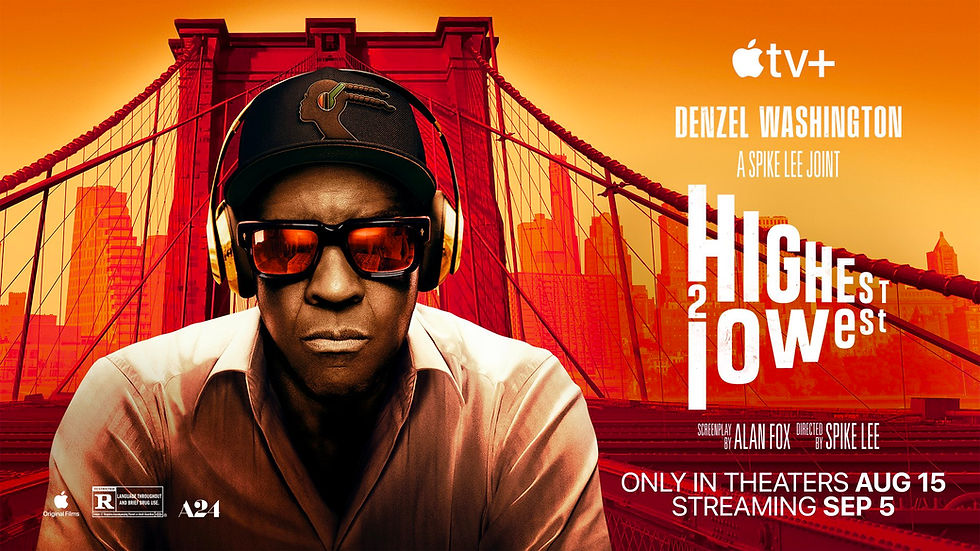F1 Review
- Louis Saddler
- Jun 27
- 3 min read

I’ve never had a connection with auto racing besides buying the Jeff Gordon DuPont jacket Trick Daddy wore in the “Nann” video three decades ago. Not even my appreciation for films like Greased Lightning, Rush, and Ford vs. Ferrari could usher me into racing fandom. However, that changed after watching F1, the long-awaited racing collaboration between Brad Pitt, seven-time Formula One champion Lewis Hamilton, and Top Gun: Maverick director Joseph Kosinski.
F1 tells the story of Sonny Hayes’s (Pitt) return to the racing world to drive with hotshot rookie Joshua Pearce (Damson Idris) to save his friend’s struggling racing team from elimination. While its lead actors are in peak form, F1’s technical components shine brightest in this one.
The strongest parts of F1 lie in its being arguably the most immersive film experience since Kosinski’s Maverick, with the sound editing being the dominant force. While other racing films’ sound invested heavily in loudness, F1 makes its impact with ambiance. Yes, the engine rumbles are there, but you also hear the effects of said engine working in concert with the rest of the car’s parts and the racing environment. It isn’t the first film to allow audiences to hear those sounds, but it indeed renders the clearest version of them you’ll ever hear without being in the vehicle.
F1’s visuals aren’t as strong as the sound. Yet, its racing sequences are still light years ahead of its cinematic predecessors. The shots from the cars' cockpits give you a view of the track from the driver’s perspective and make you feel every turn, bump, speed change, and pit stop with almost no blur. That hallmark of authenticity also lends itself to F1’s ability to capture action involving all race participants and the off-track spectacle featured in a Formula One race weekend.
Writing is where F1 starts to show some cracks, as it is a formulaic story down to the dialogue. If you’ve watched enough movies, you know where F1 is going, and a lot of lines feel like you've heard them before. Yet, even its weakest element still functions as a bright spot because it only affects the non-racing-related parts of the story.
The script does a fantastic job of breaking down the rules and technical aspects of Formula One for novices like me. In doing so, it breaks down the sentiment that drivers aren’t athletes and transforms F1 from being a movie for racing fans into a relatable sports film. The influence of Hamilton as a technical advisor is evident here, and F1 is a significantly improved product for it.
From an acting standpoint, Pitt still shows no signs of slowing down and is magic in tandem with the equally charismatic Idris. The old vs young troupe is well-worn, but the duo’s talent makes it feel fresh. The supporting turns by Javier Bardem and Kerry Condon are also charming enough to lift an otherwise mundane script, aside from its sports-related material.
In a sea of racing films released over the last 10 years, F1 not only separates itself from the pack in terms of being the most authentic – it places itself at the top as the absolute best. While the plot, as well as other parts of its narrative, feels retread, F1’s attention to the nuances of Formula One racing and its execution of technical film elements to bring them to the screen make those flaws a non-issue.
In terms of viewing options for F1, I recommend a premium format theater; however, a standard theater with good audio should also work well. If you do opt for the premium format route, I’d take a Dolby theater over IMAX due to the sound editing in F1 being superior to its cinematography.



コメント